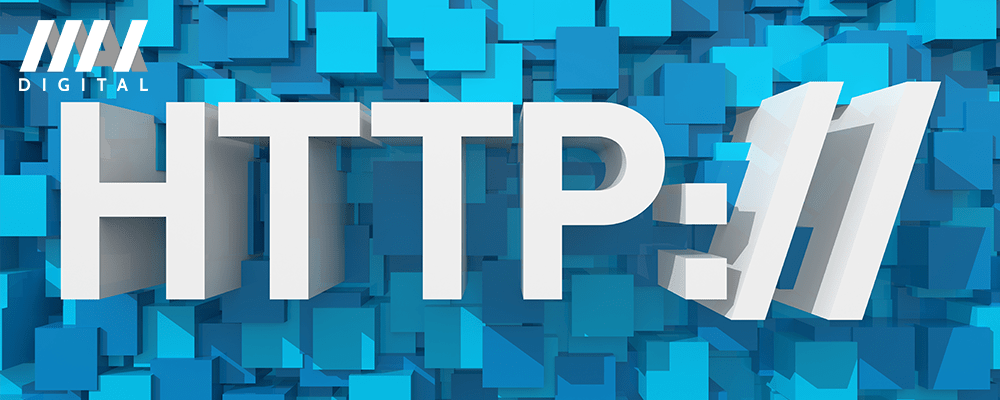Everything You Need to Know About HTTP/3

The internet is one of the best inventions the world has seen. Besides its core use, fostering connections, the internet is the foundation for many innovative inventions. And what makes the internet even more relevant today is that it keeps evolving to meet the dynamic needs of users. However, one of the parts of the internet that didn’t evolve fast over the years is the HTTP protocol. HTTP/1 was adopted in 1997, and it took 18 long years before the development of HTTP/2 progressed in 2015. Surprisingly, a draft for HTTP/3 was submitted only three years later, in 2018, so we can say that HTTP/3 will gain prominence fast.
As promised in the title, we will talk about everything you need to know about HTTP/3 as a business owner and why you need to enable it on your website.
What is HTTP/3?
To simplify, the HTTP protocol transfers data between client and server. The client is the device through which an internet user access data. And the server is the storage infrastructure of the website that stores the data. HTTP protocol transfers files by breaking them down into small individual packets and transferring the data in the files over time.
HTTP/3 is basically a thorough modification of the transport layer that helps manage file transfers. HTTP/3 introduces a move from Transmission Control Protocol (TCP) to User Datagram Protocol (UDP), which aims to solve the limitations of TCP and improve the performance and security of HTTP protocol generally.
Although the proposal for HTTP/3 still needs a final review before it will be published, about 73% of web browsers support it. Though, the Safari browser is still experimenting with the protocol. Also, out of the top 10 million websites on the internet, 25% of them, including Facebook and Google, use HTTP/3. If you want to know what Google software tools support HTTP/3, Google Analytics is already using HTTP/3.
How is HTTP/3 Better Than HTTP/2 and HTTP/1
To be clear, HTTP/1 is still in use, and it transfers files by giving each file a unique and separate connection. And it was sufficient at first, but over the years, websites became more complex, requiring HTTP/1 to make more files for each data transfer. Of course, that didn’t suffice because browsers limit the number of connections that can run simultaneously. As a result, HTTP/1 led to regular jams and slow loading times. Of course, HTTP/1 birthed many patches to maximize its performance, such as image sprites and domain sharding, but they were not sufficient.
HTTP/2 introduced multiplexing to address connection limits on browsers by allowing the transfer of multiple files across a single connection. HTTP/2 also introduced a few other improvements, such as header compression, but they are not as practical as intended.
HTTP/2 uses the TCP transport layer. TCP transfers packets in chronological order, so if one packet is missing during transmission, the connection gets jammed until the missing packet is found. This is called the head of line blocking. So, while multiplexing supports multiple files across a single connection, no file goes through if one of the files goes missing, defeating the purpose of multiplexing.
Another con of HTTP/2 is that it has no Transport Layer Security (TLS) integration. TLS enables privacy and data security across connections. The client and server must work around this by doing multiple checks to determine if the connection is secure before transferring data.
The UDP transport layer of HTTP/3 has three core features that make it significantly better than HTTP/1 and HTTP/2.
1.Independent Byte Streams: this solves the head-of-line blocking problem with HTTP/2, allowing all files to go through except the missing packet, which will be resent once found. The connection as a whole doesn’t stop or restart.
2.TLS Integration: TLS 1.3 is integrated into the HTTP/3 protocol. Hence, the client and server don’t have to make multiple roundtrips to verify the security of a connection before transmitting data. As a result, the connection is more secure, and data transfer faster. But this makes HTTP/3 incompatible with insecure websites.
3.Connection Migration: unlike IP-based routing on HTTP/1 and HTTP/2, HTTP/3 uses ID-based routing, which manages network changes better without restarting the connection. And this also makes it faster than HTTP/1 and HTTP/2.
However, HTTP/3 has its disadvantages, one of which is the fact it requires server upgrades because its transport layer is significantly different. UDP also requires more CPU power than what servers can handle currently.
Here’s Why Businesses Are Enabling HTTP/3 Support on Their Websites
Google has already made the switch to HTTP/3. Googlebot crawlers still use HTTP/2 when completely necessary, but its go-to protocol is HTTP/3. And as time goes on, there will be more adoption of HTTP/3 across the internet. As a result, businesses are enabling HTTP/3 on their websites to prepare for the takeover and improve their website performance. HTTP/3 will also impact SEO since it will reduce bounce rates and increase the loading speed of websites.
Now is the right time to upgrade your website infrastructure to support HTTP/3. Check if your website is already compatible with HTTP/3 using websites for checking HTTP/3 compatibility or check via command line and curl. Also, you can check from the dev tools network tab of Google Chrome or Firefox browsers for a more accurate evaluation. If your website has a CDN host, some of your page resources will probably already be enabled for HTTP/3.
You can migrate to a CDN host to easily enable HTTP/3 support on your website. Try Google Cloud, Cloudflare, or any other CDN host. If your website has a CDN host but has no HTTP/3 support, you can change your server to enable it. Although, you must consider the type of software of your website server because it is not all types of software that support HTTP/3. For example, Node.Js has no direct HTTP/3 support. Also, Apache is still working on enabling HTTP/3 support. You can use a web server such as Windows (IIS) that offers native support of HTTP/3, but it will require Windows Server 2022, and it will only be accessible via Windows 11 or more recent.
Finally, you don’t have to wait until HTTP/3 has caught up on the internet before upgrading. Your competitors in your target market have started making the switch, and HTTP/3 has numerous security and SEO benefits that will improve your website and give you a better SEO return on investment.

 1-888-553-8776
1-888-553-8776
